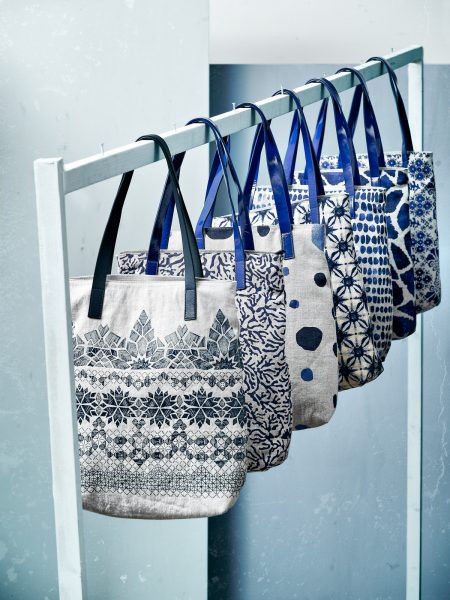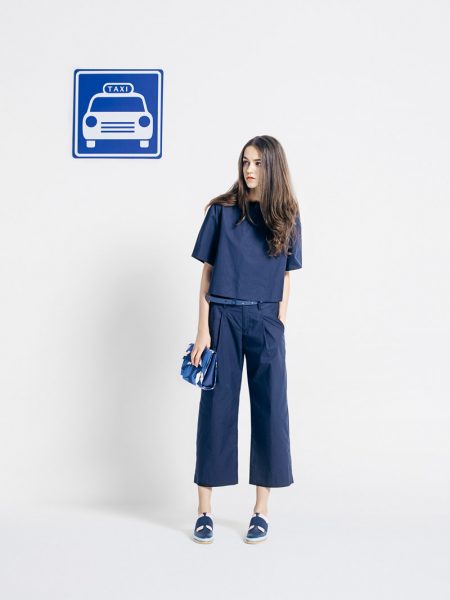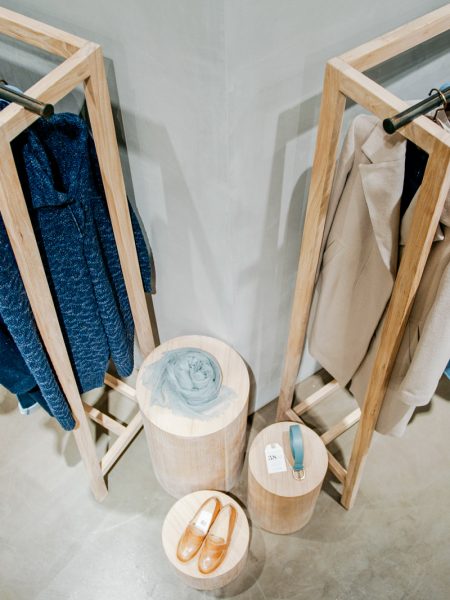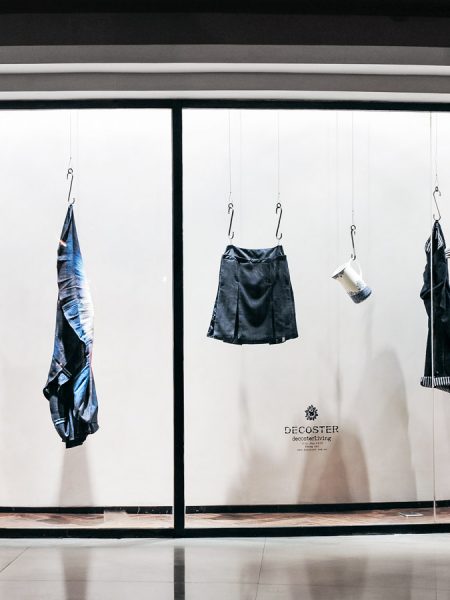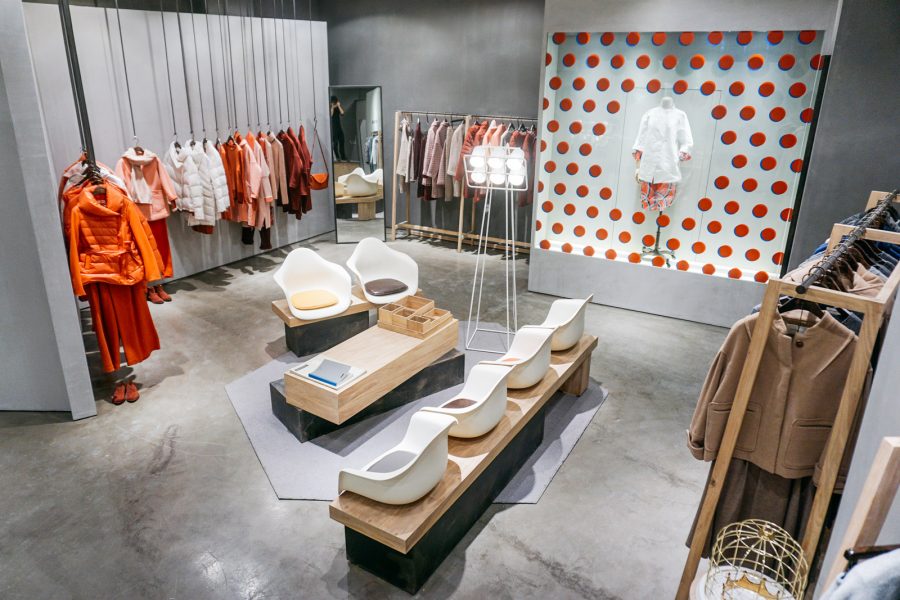Part of IDEO, the renowned consulting firm, OpenIDEO is a social impact platform with 100k+ members worldwide. It partners with leading organisations and supports communities to work on the world’s toughest challenges.
The Brief
OpenIDEO does important work in a wide range of fields. Reducing plastic waste, supporting dementia care-givers, improving emergency education are just to name a few. Dealing with truly complex topics and serving diverse communities requires empathy-driven approaches and very intentional work. Being set up in multi-disciplinary teams, my role focused on elevating communications across various parts of the OpenIDEO ecosystem.
What were the obstacles?
1. Decentralised and diverse communities.
With Chapters located across every continent in the world, OpenIDEO’s work is embedded in many different cultural contexts. This complexity, both technically and socially, requires consistent and deep listening to the communities to ensure work done is truly impactful. ‘One size fits all’ is rarely a solution.
2. Confusion of various IDEO brands.
IDEO is a well-recognised brand with a deep history. Being a part of that family, OpenIDEO encountered many scenarios of internal and external brand confusion. Having local communities around the world employ the brand as an extension only added more complexity to the issue.
3. Work on the fringe is unknown.
The nature of OpenIDEO’s work is often exploring new grounds. This makes it abstract and difficult to comprehend to the uninitiated. Dealing with terminology such as ‘open innovation’, ‘circular economy, ‘future of mobility’, etc. can create high communication barriers.
Privacy is taken seriously, thus certain details have been edited to maintain confidentiality.
What did I do?
- Marketing Communications
- Website Development
- SEO/Data Analytics
- Branding
- UX/UI Design
- Visual Design
- SEO/Data Analytics
- Community Design
Section 1: Online Platform
Reimagining an online presence that showcases OpenIDEO
Being impact-focused and community-driven, the goal is to have technology serve the mission — not be the mission. Over time, the digital engine that drove the open innovation platform began to constrain what OpenIDEO was evolving to become. It was essential to have an online platform that enabled the important work to happen rather than hinder it. This meant having a CMS that was user-friendly to team members unfamiliar with web tools. This also meant having the ability to quickly build and adapt the online platform to new and evolving needs.
Research Powering Design
Interviews and surveys of the various personas in OpenIDEO ecosystem created a foundation of insights to ground the design work. This allowed for more clearly defined goals that allowed for more objective evaluation during the UX/UI process. Too often, projects devolve into subjective debates of ‘what looks prettier’, rather than actually solving problems and serving needs. While aesthetic debates are inevitable, having research enabled the team to stay more objective.






Human-Centered Communication
OpenIDEO strives to be inclusive, that means celebrating the grassroots work that eventually leads to the world-changing work. Having a polished design is the standard most strive for, but that can sometimes lead to the feeling of it being finished. To break away from this, the communications design went down the path of bringing a more conversational and ‘prototype feeling’ to the language. This was to encourage more participation from all members of the community.
User Friendly Management
Projects usually end prematurely because little attention is paid to the maintenance and future development of it. However for this project, special care was paid to onboarding and training of team members. This was not superficial training on ‘what button to press’, rather, it went deep into explaining the underlying structure. This ranged from topics such as: how does the CMS and database update content, how does responsive design work, how does optimising images affect the user experience, and more.





New Website & Social
With the market’s rapid adoption of new technologies, we quickly adapted all our customer touch-points to be mobile first (rare for its time). This included shifting all the social media efforts to WeChat, as that was the highest point of interaction between retail teams and customers.
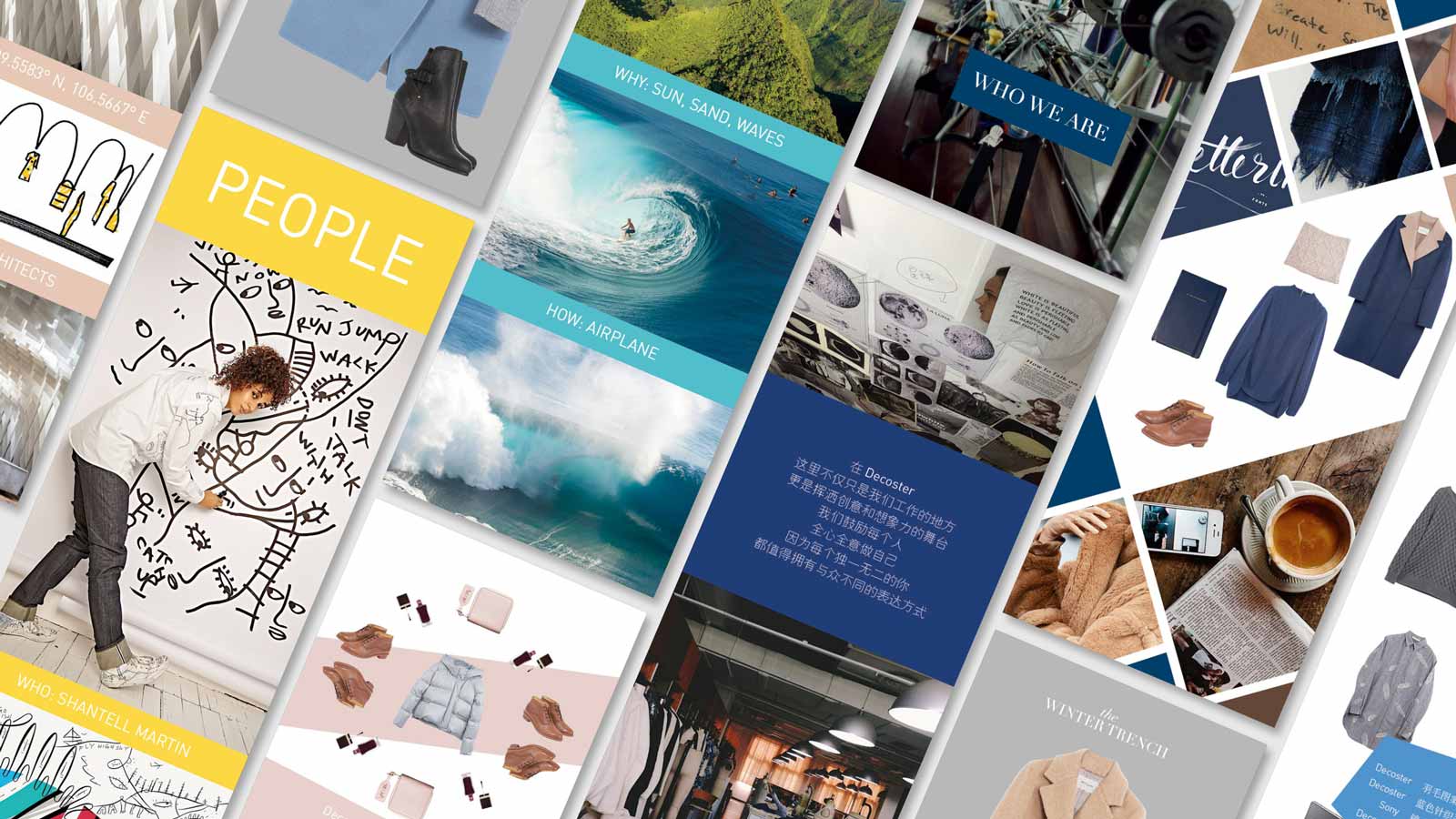
Content Marketing
Traditionally, photoshoots were done for books and editorial mediums. With our mobile-first marketing strategy, we adapted our campaign work to be conceptually suited to the small screens, not big books. This meant shooting for GIFs, videos, behind-the-scenes, and other social content forms.
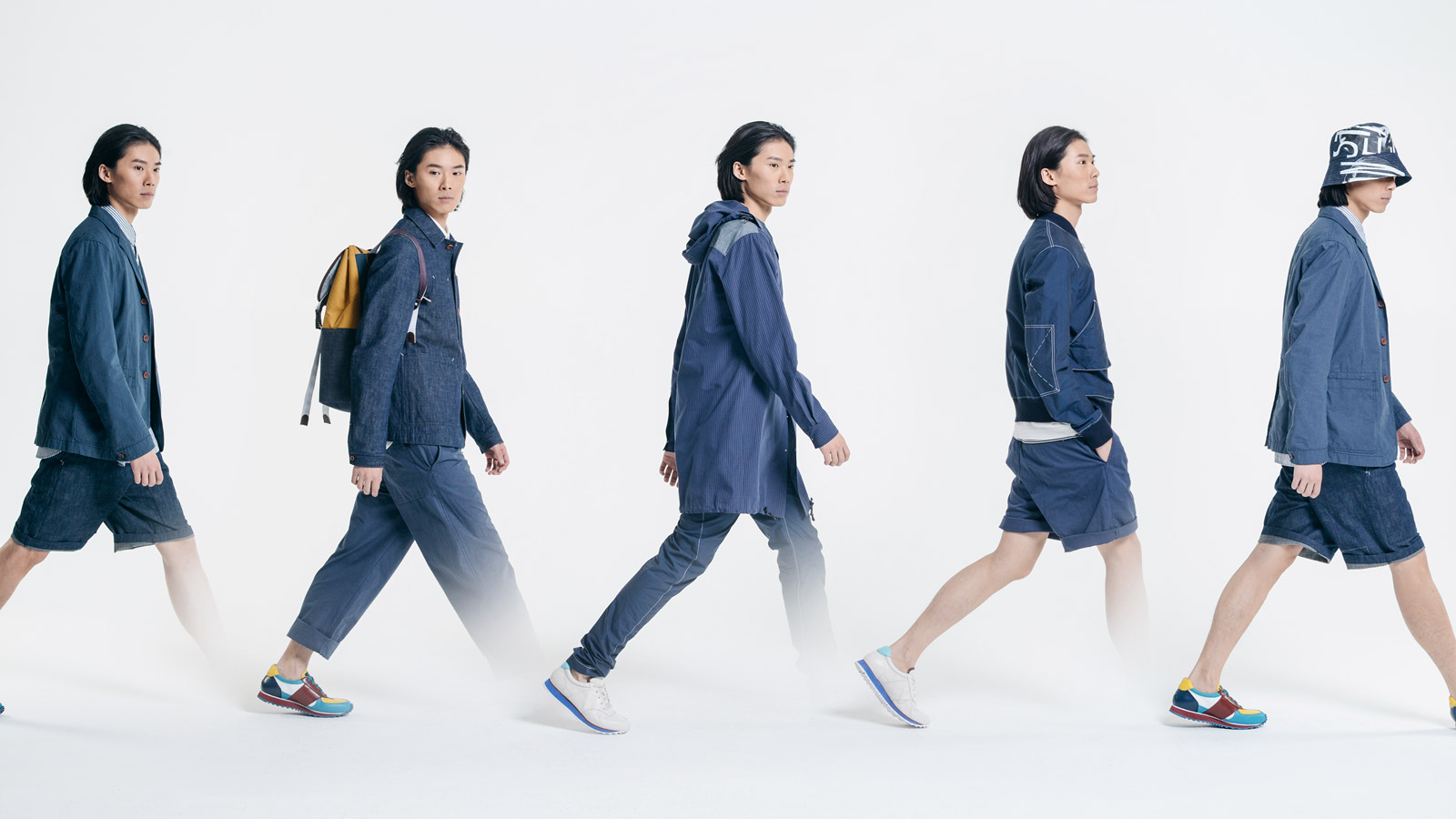
Section 2: Branding
New brand identity for a new direction.
In order to spark internal change in the company and to communicate to the new retail landscape, my department led the new branding initiative. With a focus on clean, comfortable, and forward-design, the Decoster brand was reinvented. Design was featured on Behance.
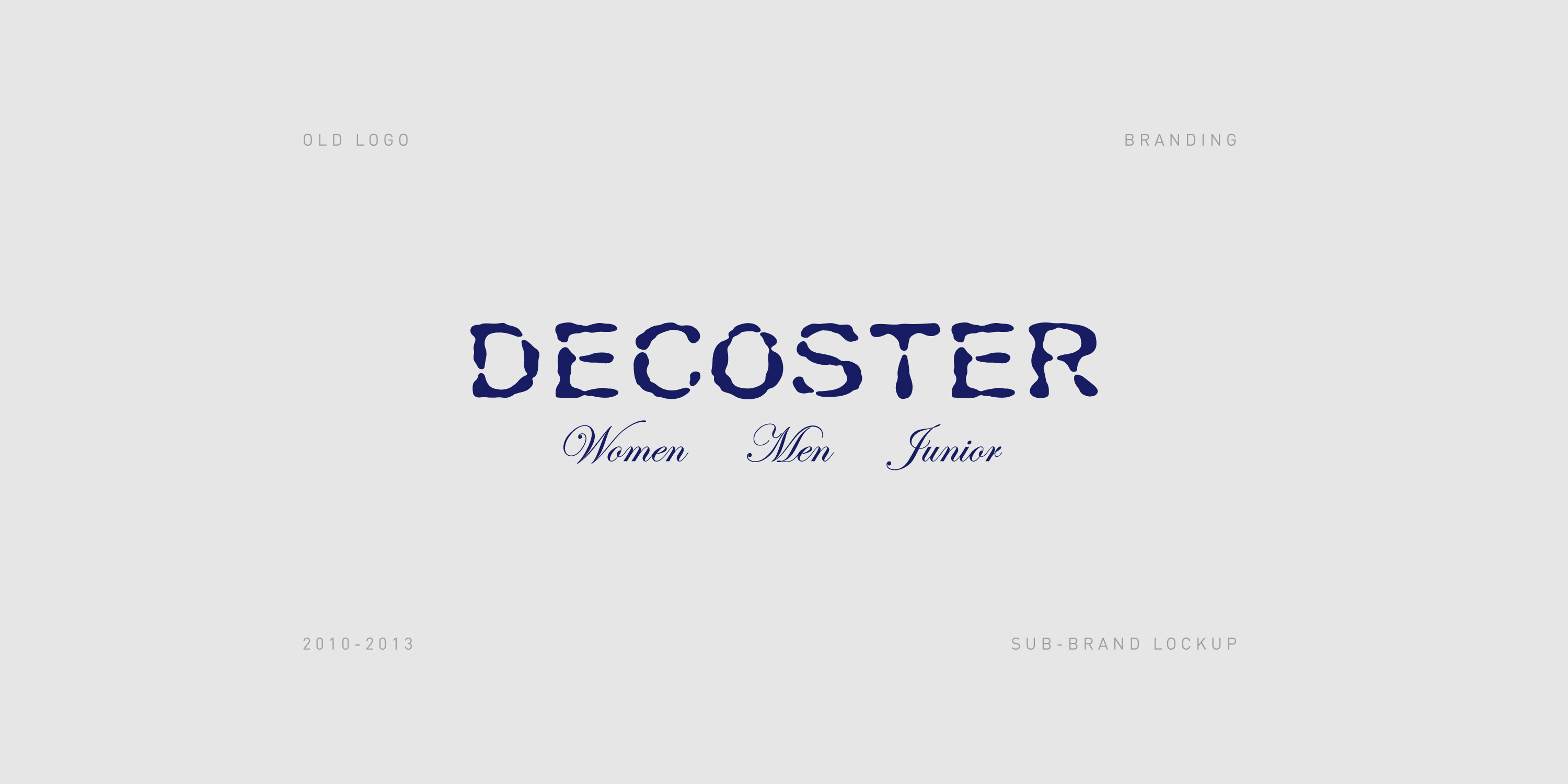
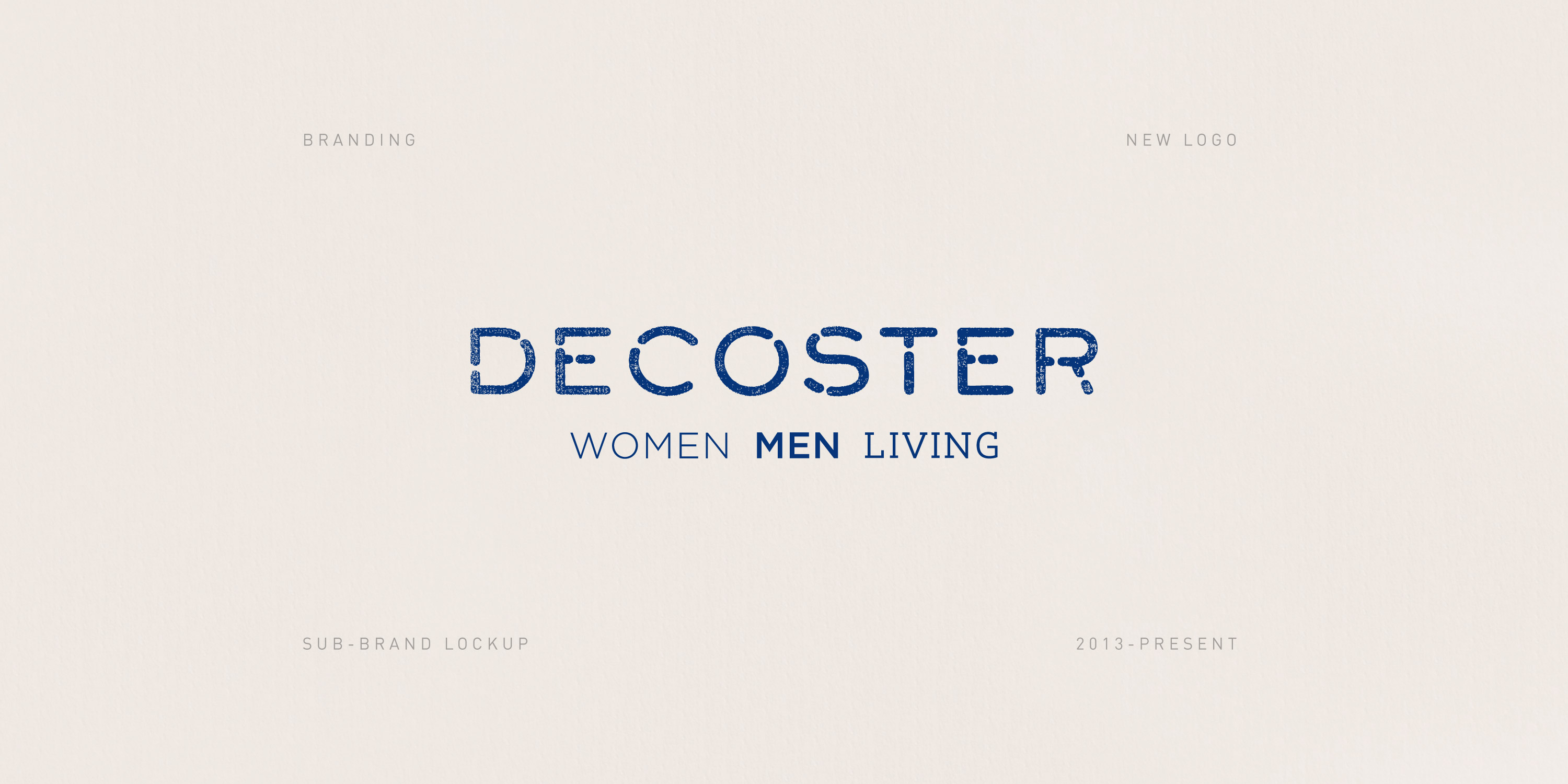
Blue
#223C76
Bleach
#F1F0EC
Brown
#90705C
Gray
#E1E0DC
Oyster
#ECE8DE
Beige
#BDA992
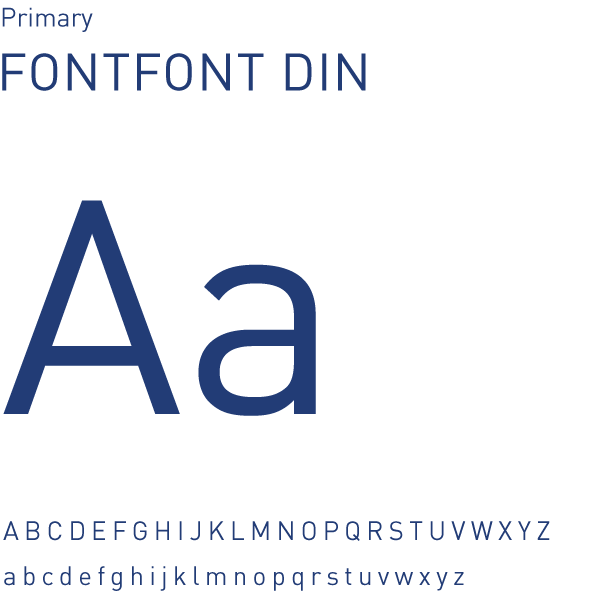
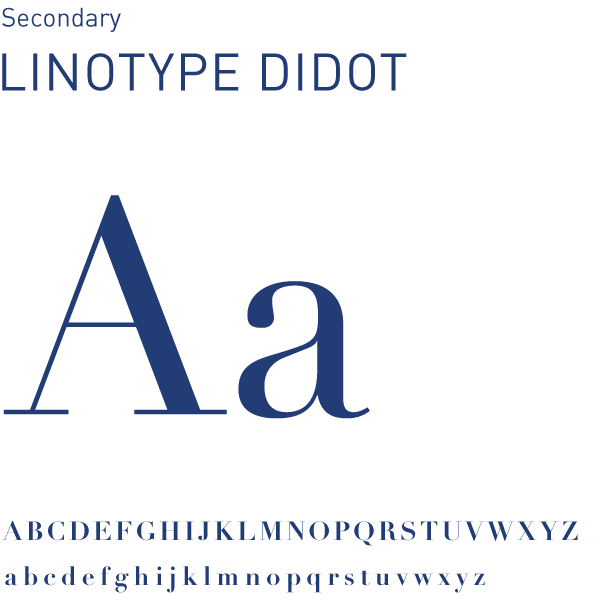
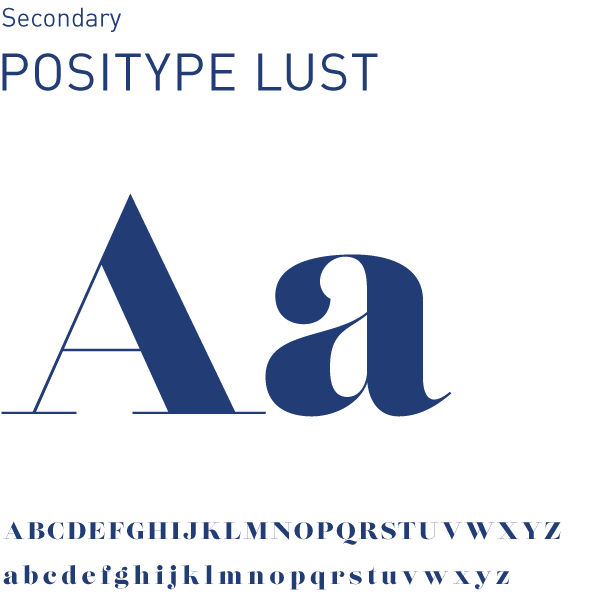



Visual Identity Guidelines
As consistency was paramount to success, comprehensive VI guidelines were created. In the 100-page book, everything was covered from standardised colours to production specs.
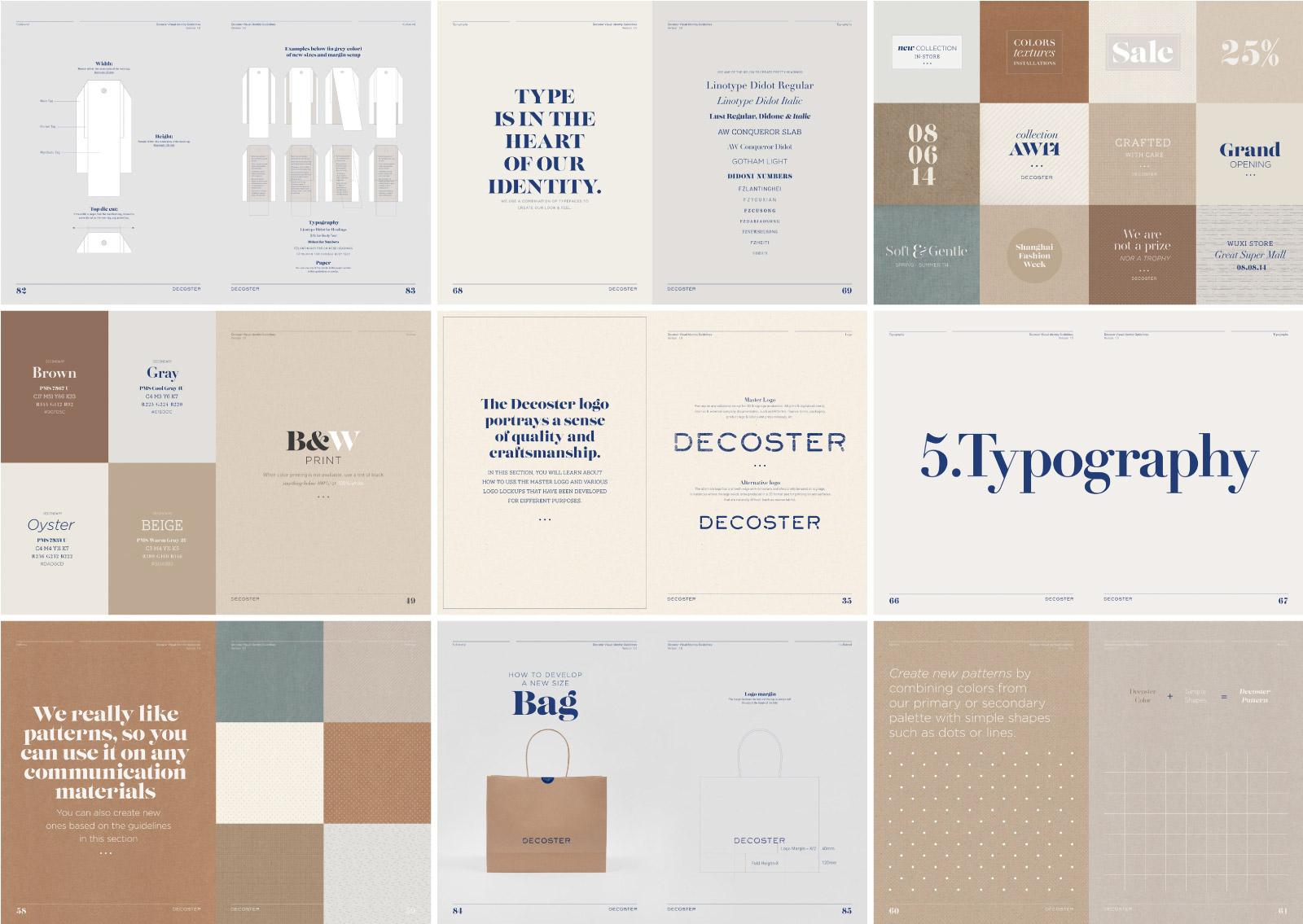
Brandbook
With the belief that branding starts internally before it succeeds externally, a brandbook was created. This tool was used to inspire and train the team to move towards the same future.

Section 3: Visual Merchandising
Closer integration between the retail and marketing.
By tightly knitting the visual merchandisers with the marketers, we created a retail experience that was unified under the same brand communication. With a new store design combined with the new brand design, Decoster was updated to better resonate with the new generation’s retail scene.

Section 4: Management
Cultivating culture and systems for a more productive future.

Process & Systems
Setting up cross-department processes to create more effective work. Implementing new software to increase efficiency. Building templates for critical tasks to maintain high standards.
Training
Transforming the brand involved changing real behaviours in the workplace. To weave a new culture, we performed company-wide training and put into action new onboarding processes.
Data Tracking
Tracking performance and using data to make decisions was imperative. We set up systems to look at engagement across marketing channels and compared it with retail performance.
Active Project
This is an on-going project that has yet to be concluded, so it’s not possible to finish the case study at this time. Sorry! Come back another time to see the results.
Section 5: Outcome
The main achievements that made a difference.
1. Historical highest revenue reached.
In January 2015, Decoster had reached its highest point in revenue. Ultimately, this achievement is owed to everybody company-wide, as it takes more than just exceptional marketing and great products to succeed. That being said, I’m glad to have been a contributing factor of that success.
2. Created a new productive company culture.
After years of failed attempts to get different departments to cooperate, I’m personally proud of the culture of collaboration that finally took root. Testimony of this was when different teams would proactively stay behind to help each other in times of need without being asked to — a scene that was extremely rare previously.
3. Successfully transformed the brand.
While many other local Chinese brands suffered to the international competition, I helped transform Decoster into a competitive designer brand. By taking a long-term, inside-out, and people-orientated focus, the results ultimately came into fruition with growing store locations and high recognition nation-wide.





